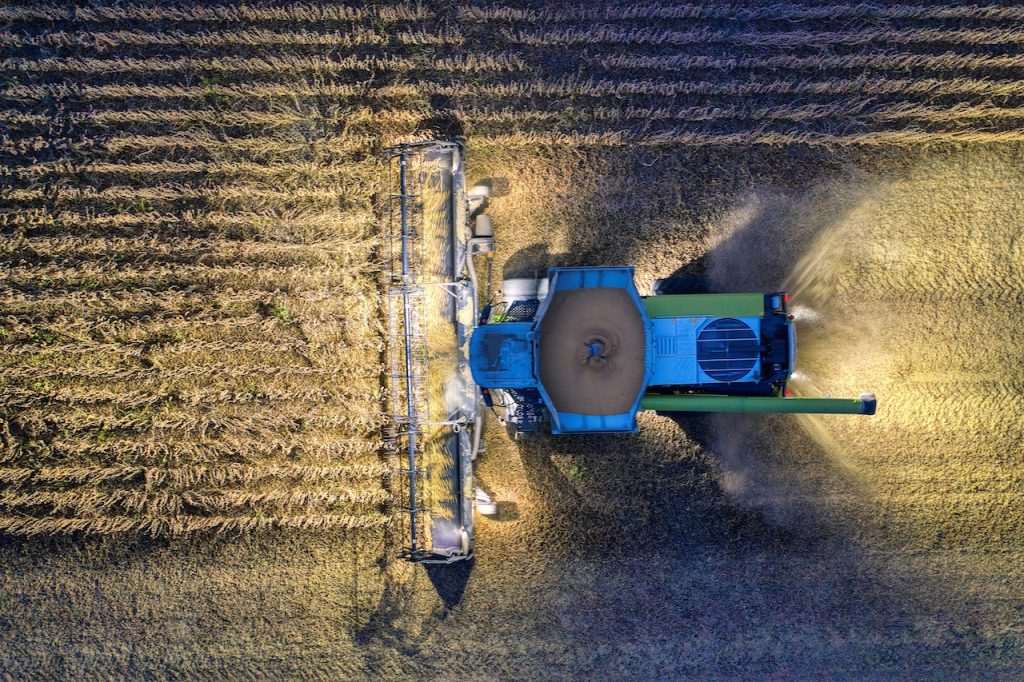Out with the Old – In with the New
For most of us, this time of year consists of decompressing after spending time with the family and deciding which resolutions we want to commit to in the coming year. However, for most commercial farmers and agricultural operators, early winter is the time of year spent planning for the upcoming growing season. Along with making next year’s plans, farmers have to also consider upcoming advances in technology, changes in regulations, pricing fluctuations, and many other variables that can help make — or break — a profitable growing season. That’s why we decided to explore commercial agriculture predictions and trends for 2023: a look at the year ahead for our final article of the year.
What are the Predictions for Agriculture Trends in 2023?
Based on the produce you see at your local market or the ingredients in your food, you may feel as though agriculture typically remains unchanged, but this is far from reality. Behind the scenes, commercial agriculture is constantly evolving. Here are some of the trending topics that we expect farmers to be focusing on in 2023.
Ag-Tech Adoption and Capabilities – This should come as no surprise considering the rapid pace in which technology is — in most cases — improving industries across the board. The field of agricultural technology is growing at an exponential rate. In fact, a study conducted by Business Insider suggests that the average farm will produce around one million digital data points each day by 2025. That number is reported to currently be around 500,000 daily data points. This metric alone should paint a picture of the impact technology is making in the commercial agriculture space. Although technology’s place in farming can be wildly beneficial, there are some concerns that need to be addressed by the industry as a whole. As discussed in a previous article, the farming industry is facing an information overload and without resolve, much of the collected data may not be as useful as it could be. The issue, in a nutshell, is that many ag-tech brands do not utilize an open-API system, which allows collected data to be used by other platforms — thus potentially hindering data-based planning, forecasts, and decisions by farmers. Hopefully, the industry will make forward progress during 2023 to mirror the open API platforms like those put in place by brands like autonomous insect monitoring provider, FarmSense, and agricultural behemoth, John Deere.
Incorporating Micronutrients – According to Crop Life, the commercial micronutrient industry’s market cap is expected to nearly triple in by the close of the decade, reaching a projected $9.1 billion. As the demand for agricultural crops has continued to skyrocket during the past century, farmers often find themselves pushing their soil to its limits. Frequent tilling, pesticide and herbicide use, and even some pests are just a few of the things that can degrade the quality of soil. This has led to a boom in the micronutrient industry as farmers are searching for methods to supplement many of the nutrients lost during the growing seasons. Based on analyst projections like this one by Persistence Market Research, we expect micronutrient use trends to continue their upward trajectory during the coming year.
Regulatory Changes – The agriculture regulatory landscape — like most — is always evolving. One of the largest pieces of upcoming legislation that has the attention of US based farmers is the 2023 Farm Bill. With the current Farm Bill set to expire in 2023, political leaders and regulatory bodies have already started discussing the components of the next version. These bills are typically enormous — the current Farm Bill is close to 1,000 pages — so, it would be pure speculation to predict what changes will be made to the upcoming version but rest assured that it will impact nearly all aspects of commercial agriculture in the US. Another frequently discussed topic these days revolves around crop input legislation, specifically pesticides and herbicides. With the European Union’s Farm to Fork Strategy underway, farmers outside the EU are left wondering when or if their own legislative bodies will enact similar regulations. While the Farm to Fork Strategy is a massive bill that addresses a multitude of topics, its ambitious pesticide reduction regulations have been the forefront of debate since the bill’s inception. It wouldn’t be surprising to see other governing bodies begin proposing similar pesticide reduction measures in the near future.
Increased Sustainability Practices – In theory, one of the results of the aforementioned 2023 agriculture trends is that farmers will — ideally — operate in a more sustainable manner. Although regulatory changes can, in a way, force farmers to become more sustainable, this isn’t something that we should necessarily be upset about. With rising global food demand and overworked soil, it should be easy to understand why sustainability is at the forefront of many conversations these days. Fortunately, advances in agricultural technology, micronutrients, and research are granting farmers the knowledge, tools, and capability to improve crop yield while reducing their environmental impact.
The Takeaway
2023 is shaping up to be an exciting year for commercial agriculture. Sure, there are several hurdles that the industry needs to address, but fortunately, the coming year appears to have a few tricks up its sleeve that will hopefully better position the global commercial agriculture industry for a successful and sustainable year ahead.
References:
- https://www.researchgate.net/publication/320856028_Agricultural_Management_through_Wireless_Sensors_and_Internet_of_Things
- https://developer-portal.deere.com/#/
- https://www.croplife.com/crop-inputs/whats-driving-exponential-growth-of-the-micronutrients-market/
- https://www.globenewswire.com/en/news-release/2022/08/04/2492536/0/en/Agriculture-Micronutrients-Market-is-expected-to-surge-at-a-CAGR-of-8-4-by-the-end-of-2031-Persistence-Market-Research.html#:~:text=Micronutrients%20facilitate%20effective%20operation%20of,of%20micronutrients%20for%20crop%20production.
- https://food.ec.europa.eu/horizontal-topics/farm-fork-strategy_en
